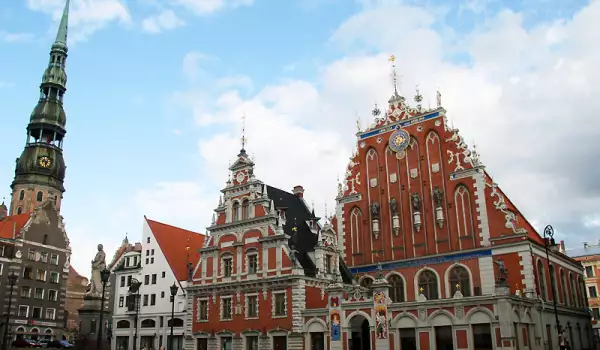Riga

Riga is the capital of Latvia and most cosmopolitan city in the Baltic States. Overall, Riga stands out among all other central cities in this part of Europe, especially with its incredible architecture. In Riga there are more remarkable buildings in Art Nouveau style than in any other city in the world. This immense architectural wealth is valued by the organization of UNESCO, which includes the city in the list of World Heritage Sites. Riga is the main commercial, industrial, financial and cultural center of Latvia and as such it certainly has much to show visitors.
Riga is located along both banks of the River Daugava, just 10 km away from where it flows into the Baltic Sea. To locals, the area is known as the Gulf of Riga and Riga is located on its southern coast. Riga is the largest city in the three Baltic countries (Lithuania, Latvia, Estonia) and is the third largest town on the Baltic Sea after St. Petersburg and Stockholm. The entire city of Riga covers an area of 307.17 square kilometers and the population of the Latvian capital is about 720 000 inhabitants. In Riga there are two beautiful lakes that complement its charm - Kishezers and Yugla.
The first settlers in the area of present - day Riga were the Finnish tribe of Levy that were established between the mouths of the rivers Daugava and Ridzene. Further expansion of the city is largely due to German traders, missionaries and crusaders who arrived in the area during the second half of the 12th century, attracted by the sparsely populated territory. The ability to develop new markets and the mission to convert the local population were two reasons for their arrival in the land of Riga. Around 1190 an Augustinian monk from Segeberg Maynard built the first monastery in the area. Albert led 23 ships and 1, 500 armed knights crusaders and landed on the coast of Riga and the city announced him as its bishop. In 1201 he created the Livon Order (later part of the Teutonic Knights) and officially announced Riga as a town.
Riga for a long time served as a center of trade for the Baltic nations and Russia to the world. In 1282 the city joined the military trade union Hansa. This union was able to give Riga significant economic and political stability, thus creating a strong foundation for further turmoil through which Latvia goes. In 1721 Riga was annexed by Russia and remains an industrial port city of the Russian Empire until the outbreak of World War I in 1914. On August 21, 1991 Latvia declared its independence after 46 years of Soviet occupation. On September 6, 1991 Russia recognized the independence of the Baltic nation and Riga city officially became the second independent Latvian Republic.

A walk through the modern capital Riga will allow you to see the amazing historical monuments, which are followed by no less remarkable new developments. Old Town Riga is full of many streets and squares with buildings dating from the 16th and 17th centuries. Most of them are richly ornamented with carvings and statues. One of the best examples of medieval architecture in Riga are the buildings "Three Brothers", which represent an interesting series of houses, the oldest of which was built in the 15th century. Among the buildings in Old Town Riga stands out the silhouette of the old cathedral. It was built in 12-13 century and is the largest church in the Baltic region. The body inside it dates back from 1844
Most of the buildings in Art Nouveau style are situated around the old town of Riga. Many of these magnificent monuments can be seen on the street "Alberta." Most of them are made by the father of the famous Russian director Sergei Eisenstein - Mikhail Eisenstein. Among other attractions of Riga are Rīgas Pils, which houses the Museum of Latvian History and the Museum of foreign art. Also very attractive is Pulvertonis, which is the only defensive tower remaining of the original walls. Today, in this tower in Riga, you can see the Latvian War Museum.







